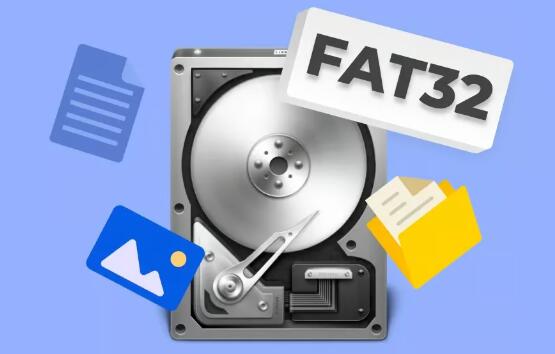Formatting an SD card to FAT32 can be useful for compatibility reasons, especially if you need to use the card with devices or systems that require this file system. Windows 11 does not offer FAT32 as an option directly in its built-in formatting tool for larger SD cards (over 32GB), but you can use several methods to achieve this. This guide will walk you through the process in detail.
Why Choose FAT32?
FAT32 (File Allocation Table 32) is a file system used by various operating systems and devices, including older PCs, gaming consoles, and some cameras. It offers good compatibility across different platforms, but it has some limitations compared to newer file systems like NTFS or exFAT. For example:
File Size Limitation: FAT32 supports a maximum file size of 4GB.
Volume Size Limitation: While FAT32 can handle partitions up to 2TB, Windows 11’s built-in tool limits FAT32 formatting to 32GB.

Despite these limitations, FAT32 remains a practical choice for certain applications.
Method 1: Using Windows 11 Built-in Tool (for SD Cards 32GB or Smaller)
Insert the SD Card: Place the SD card into your computer’s card reader or use a USB SD card adapter.
Open File Explorer: Press Win + E to open File Explorer.
Locate the SD Card: In the left sidebar, find the SD card under “This PC.” It should be listed as a removable disk.
Format the SD Card:
Right-click on the SD card drive and select Format.
In the Format dialog box, select FAT32 from the “File system” dropdown menu.
Choose a “Volume label” (optional).
Check the box for Quick Format if you prefer a faster, less thorough format.
Click Start and confirm your choice. Windows will format the card, which may take a few moments.
Method 2: Using the Command Prompt (For Any Size SD Card)
For SD cards larger than 32GB, you’ll need to use the Command Prompt to format them to FAT32.
Open Command Prompt as Administrator:
Press Win + S to open the search bar, type cmd, and select Run as administrator.
Launch Diskpart Utility:
In the Command Prompt window, type diskpart and press Enter. This opens the Diskpart utility.
List Disks:
Type list disk and press Enter to display all disks connected to your computer. Identify your SD card by its size.
Select the SD Card:
Type select disk X (replace X with the number corresponding to your SD card) and press Enter.
Clean the SD Card:
Type clean and press Enter. This removes all partitions from the SD card.
Create a New Partition:
Type create partition primary and press Enter.
Format the Partition to FAT32:
Type format fs=fat32 quick and press Enter. This formats the partition to FAT32.
Assign a Drive Letter:
Type assign letter=X (replace X with the letter you want to assign to the SD card) and press Enter.
Exit Diskpart:
Type exit and press Enter to close Diskpart.
Close Command Prompt:
Type exit again and press Enter to close Command Prompt.
Your SD card is now formatted to FAT32 and should be ready for use.
Method 3: Using Third-Party Tools
If you prefer a graphical interface or need to format a very large SD card (over 32GB) to FAT32. you can use third-party tools. Many free and reliable options are available, such as:
GUIFormat: A straightforward tool that supports FAT32 formatting for drives larger than 32GB.
EaseUS Partition Master: A comprehensive partition management tool with a user-friendly interface.
MiniTool Partition Wizard: Another versatile tool for disk and partition management.
Using GUIFormat
Download and Install GUIFormat: Visit the official website to download GUIFormat. Install the tool on your computer.
Run GUIFormat:
Open the program. It will display a simple interface with options for formatting.
Select the SD Card:
Choose your SD card from the dropdown list.
Configure the Format Settings:
Enter a volume label (optional).
Choose FAT32 from the file system dropdown.
Start Formatting:
Click Start and confirm your choice. GUIFormat will format the SD card to FAT32.
Tips and Considerations
Backup Data: Formatting will erase all data on the SD card. Ensure you back up any important files before proceeding.
Check Compatibility: Verify that the devices you plan to use with the SD card support FAT32.
File Size Limitations: Remember that FAT32 cannot handle files larger than 4GB. If you need to store larger files, consider using exFAT.
Troubleshooting
Formatting Errors: If you encounter errors while formatting, ensure no other programs are accessing the SD card, and try using a different card reader or USB port.
Disk Errors: If Diskpart or third-party tools report disk errors, your SD card might be physically damaged. Consider replacing it if you encounter persistent issues.
By following these methods, you can format your SD card to FAT32 on Windows 11 efficiently, ensuring compatibility with a wide range of devices and applications.
About us and this blog
Panda Assistant is built on the latest data recovery algorithms, ensuring that no file is too damaged, too lost, or too corrupted to be recovered.
Request a free quote
We believe that data recovery shouldn’t be a daunting task. That’s why we’ve designed Panda Assistant to be as easy to use as it is powerful. With a few clicks, you can initiate a scan, preview recoverable files, and restore your data all within a matter of minutes.
Subscribe to our newsletter!
More from our blog
See all postsRecent Posts
- How to recover a deleted slide in powerpoint? 2025-02-27
- How to recover deleted capcut videos? 2025-02-27
- How to recover a file deleted from a shared drive? 2025-02-27










